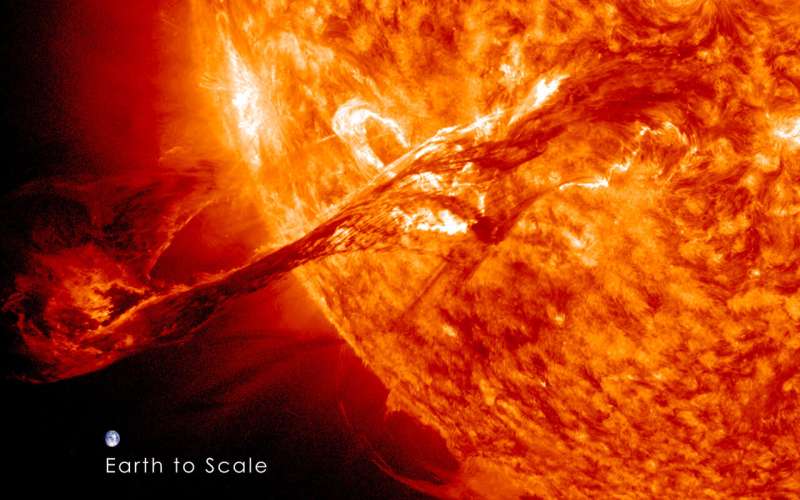Speed of space storms key to protecting astronauts and satellites from radiation

Space weather forecasters need to predict the speed of solar eruptions, as much as their size, to protect satellites and the health of astronauts, scientists have found.
Scientists at the University of Reading found that by calculating the speed of coronal mass ejections (CMEs) when they hit Earth, forecasters could provide more useful early warnings. This would help operators of critical infrastructure such as satellites know if they need to take evasive action or switch off systems to protect them, and warn astronauts when they need to shelter inside shielded parts of the International Space Station.
Coronal mass ejections are caused by huge eruptions of material from the sun, traveling through interplanetary space and disturbing the Earth's own magnetic field system. Using solar imagers to measure the speed of CMEs close to the Sun, it is possible to forecast the arrival time of a CME at Earth.
Operators of technological systems, such as satellites, which are vulnerable to space weather then have the opportunity to take action to limit the damage. However, scientists say such warnings could be more useful if combined with more sophisticated information about the severity of a storm when it hits Earth.
Professor Mathew Owens, space scientist at the University of Reading's Department of Meteorology, said: "Not all coronal mass ejections trigger a severe storm, which means just by looking at the sun for activity, we get a lot of `false alarms' where action is taken that isn't needed.
"While it is better to be safe than sorry, especially with the health of astronauts, sometimes the costs of repeatedly taking unnecessary action to protect a satellite network could prove more costly than the potential space-weather damage itself."
Space weather is listed as one of the biggest threats to the UK and many other countries, due to the possibility that computers, communication networks and electricity systems could be disrupted. Billions of dollars are currently being spent on new spacecraft and systems to better forecast and measure eruptions when they occur.
In the new study, published today in the scientific journal Space Weather, the researchers outline a new way to quantify the value of knowing CME arrival time. They show that the speed of the CME at Earth is a useful extra piece of information that can be used to reduce the number of false alarms and make forecasts more valuable.
The scientists say their new finding should help to guide future efforts to improve space weather forecasts, helping to protect critical infrastructure and the health of astronauts in the future.
More information: M. J. Owens et al, The value of CME arrival‐time forecasts for space weather mitigation, Space Weather (2020). DOI: 10.1029/2020SW002507
Provided by University of Reading




















